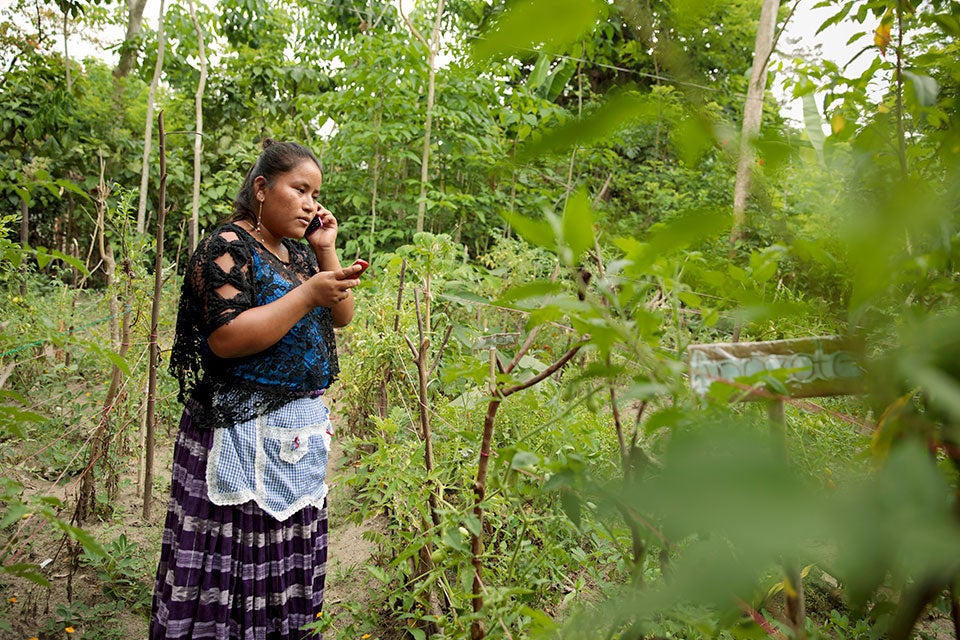Announcer: International Day of Rural Women 2018
Theme: Sustainable infrastructure, services and social protection for gender equality and the empowerment of rural women and girlsDate:

On 15 October, the United Nations commemorates the International Day for Rural Women. This year’s theme, “Sustainable infrastructure, services and social protection for gender equality and the empowerment of rural women and girls”, places empowerment of rural women at the heart of fulfilling the vision of the Sustainable Development Goals (SDGs).
Despite progress on some fronts, gender inequalities remain pervasive in every dimension of sustainable development; and in many areas, progress is too slow to achieve the SDGs by 2030. Rural women make up over a quarter the world population and majority of the 43 per cent of women in agricultural labour force in developing countries. Yet, they are disproportionately affected by poverty, exclusion and the effects of environmental and climate change. Virtually every gender and development indicator for which data are available reveals that globally, rural women fare worse than rural men and urban women. This is clearly expressed in the gaps in rural women’s and girls’ access to infrastructure, services, and social protection.
Lack of access to affordable and clean energy at the household level has particular implications for rural women and girls. Where access to clean and affordable energy is lacking, women and girls may spend large portions of their day performing laborious and physically draining tasks such as collecting biomass fuels, manually processing foodstuffs and pumping water.
In areas of fuel scarcity, fuel collection can take up as much as five hours per day—time that could otherwise be used for education, rest or leisure. Women and girls are also disproportionately affected by long-term health problems resulting from household air pollution and carrying heavy fuel loads. In countries that rely heavily on solid biomass and coal for cooking, women account for 6 out of every 10 premature deaths through household air pollution caused by unclean fuels and inefficient technologies.
When safe drinking water is not available on premises, the burden of water collection and treatment largely falls on women and girls, who are responsible for water collection in 80 per cent of households without access to water. This work is arduous and will only become harder given increasing water scarcity. It exacts a toll on women’s health, can compromise their safety and takes up time that could otherwise be spent on paid work, education or leisure.
The absence of adequate sanitation facilities exposes women and girls to illness, risks to their safety and violence—hampering their ability to go to school, earn an income and move around freely. Conversely, enhanced access to safe drinking water and sanitation has been associated with increases in women’s productive activities as well as children’s school attendance. Provision of safe drinking water, that is, continuous piped water at the household level, has the greatest health benefits and lowest drudgery costs. Extending the reach of water grids to underserved communities is hence an important priority.
Rural women’s civil society organizations, enterprises and cooperatives are critical in gathering and uniting rural women, supporting their voice, agency and representation in the political and economic spheres, and enabling them to influence the decisions and institutions that affect their lives. Around the world, rural women have organized to advocate for the infrastructure, services, and social protection necessary for their wellbeing, livelihoods, and resilience. Rural women have mobilized to secure water for irrigation and household use, and renewable energy for lighting their homes and powering small businesses. Rural women’s cooperatives are providing childcare services for and by their members.
Yet, delivering on the gender equality commitments of the 2030 Agenda stands or falls by the allocation of sufficient resources for their achievement and concerted action by governments and all stakeholders. Essential services on which millions of rural women and girls depend—health, education, childcare, shelters—are chronically underfunded or simply unavailable. Where they exist, they are often the first to be hit by austerity measures, which are once again on the rise. In 2018 alone, 124 countries are expected to be cutting their budgets, eroding social protection measures and essential services on which so many rural women and girls depend. This is not inevitable. In virtually all countries, there is scope for raising or reallocating resources to strengthen public services that are essential for women and girls. It is a matter of political will and of using all the available policy tools. The cost of inaction is simply too high.